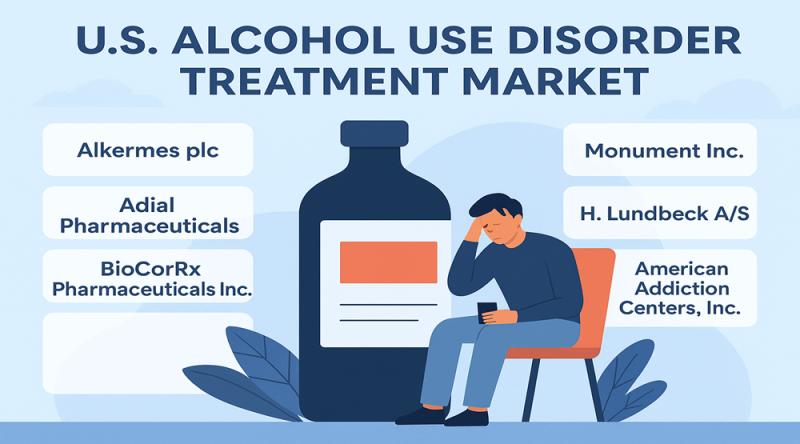Working long hours at night doubles health risks: study – The Korea Herald

Report on the Health Impacts of Irregular Working Conditions and Implications for Sustainable Development Goals
Introduction
A recent study by the Occupational Safety and Health Research Institute has quantified the severe physical and mental health risks associated with irregular working conditions, including shift work, nighttime work, and long hours. The findings present a significant challenge to the achievement of several United Nations Sustainable Development Goals (SDGs), particularly those concerning health, decent work, and equality. This report analyzes the study’s findings and frames them within the context of the SDG framework.
Analysis of Health Risks in Relation to SDG 3 (Good Health and Well-being)
The study, based on a 2023 survey of 38,599 employees, reveals that irregular work schedules directly undermine SDG 3, which aims to ensure healthy lives and promote well-being for all. The health of 15.8% of the surveyed workforce is shown to be at a significantly elevated risk.
Key Findings on Physical Health
Workers in non-standard conditions face a substantially higher likelihood of developing physical health problems compared to those with regular hours. This disparity is a direct barrier to ensuring well-being for all workers.
- Workers combining shift work, nighttime work, and long hours face a 129% greater risk to their physical health.
- The combination of shift work and long hours (over 48 hours per week) increases health risks by 128%.
- Shift work combined with nighttime work (including midnight to 5 a.m.) raises the health risk by 53.1%.
- Even irregular shift work alone increases the risk of physical health problems by 23.7%.
Key Findings on Mental Health
While irregular shifts alone did not show a significant rise in mental health issues, the combination with other factors created a severe risk, directly impacting the mental well-being targets of SDG 3.
- The combination of long hours, nighttime work, and irregular shifts elevates the risk of mental health issues by 90.4%.
- Workers with long hours and nighttime schedules face an 86.1% higher risk.
- Night shift work alone increases the risk of mental health problems by 22.6%.
Implications for SDG 8 (Decent Work and Economic Growth) and SDG 10 (Reduced Inequalities)
The research highlights a failure to provide “decent work” as outlined in SDG 8, specifically Target 8.8, which calls for the protection of labor rights and the promotion of safe and secure working environments. Furthermore, the stark contrast in health outcomes between workers with regular and irregular hours represents a significant inequality, directly opposing the objective of SDG 10.
Contributing Factors to Unsafe Work Environments
The study identified several factors beyond scheduling that contribute to poor health outcomes, all of which detract from the principles of decent work.
- High intensity of labor
- Insufficient rest and recovery time
- Lack of flexibility for workers to rest when needed
- Inadequate compensation
- Lack of support from colleagues and superiors
Policy Recommendations for Alignment with Sustainable Development Goals
To mitigate these health risks and align labor practices with SDGs 3, 8, and 10, the researchers proposed several actionable policy changes. These recommendations aim to create a regulatory framework that prioritizes worker health and well-being as a cornerstone of sustainable economic activity.
- Strengthen Legal Protections: Institute clear legal clauses that guarantee sufficient physical and mental recovery time for employees working irregular, late, or long hours.
- Mandate Rest Periods: Enforce a mandatory minimum rest period of at least 11 hours following extended overtime or nighttime work, mirroring international best practices.
- Restrict Excessive Overtime: Implement restrictions on overtime work that exceeds a standard eight-hour extension to the regular work week.
- Expand Health Monitoring: Broaden the criteria for special health inspections to include all workers engaged in irregular schedules, not just those in traditionally recognized hazardous roles.
- Promote Workplace Flexibility and Support: Encourage flexible work structures that allow employees to obtain sufficient rest and foster a culture of fair compensation and peer support.
1. Which SDGs are addressed or connected to the issues highlighted in the article?
Detailed Explanation:
-
SDG 3: Good Health and Well-being
The article directly addresses this goal by focusing on the detrimental effects of irregular working conditions on the physical and mental health of employees. It cites a study showing that shift work, nighttime work, and long hours significantly increase the risk of health problems. For instance, it states that such conditions make workers “129 percent more likely to develop problems with their physical health” and that working long hours at night leads to an “86.1 percent higher risk of developing mental health issues.” The call for sufficient rest and recovery time is aimed at promoting worker well-being.
-
SDG 8: Decent Work and Economic Growth
This goal is central to the article’s theme, particularly its emphasis on promoting safe and secure working environments. The study investigates “irregular labor conditions” and their impact, highlighting the need to protect workers. The article’s conclusion, which calls for “clear legal clauses to guarantee” rest, “restricting overtime work,” and ensuring “fair compensation,” directly relates to the principles of decent work and the protection of labor rights.
2. What specific targets under those SDGs can be identified based on the article’s content?
Detailed Explanation:
-
Target 3.4: By 2030, reduce by one third premature mortality from non-communicable diseases through prevention and treatment and promote mental health and well-being.
- The article’s focus on the increased risk of “problems with their physical health” due to long and irregular hours aligns with the prevention of non-communicable diseases. Furthermore, the significant finding that certain work patterns lead to a “90.4 percent” higher risk of mental health issues directly connects to the promotion of mental health and well-being as stipulated in this target. The proposed solutions, such as providing sufficient rest, are preventative measures.
-
Target 8.8: Protect labour rights and promote safe and secure working environments for all workers… and those in precarious employment.
- The article’s entire premise is built around the need to create safer working environments. It identifies workers in “irregular labor conditions” (shift, night, and long hours) as a vulnerable group. The recommendations to “restrict overtime work exceeding eight hours,” provide “at least 11 hours of rest,” and implement “clear legal clauses” are direct actions aimed at protecting labor rights and ensuring a safe work environment, which is the core of Target 8.8.
3. Are there any indicators mentioned or implied in the article that can be used to measure progress towards the identified targets?
Detailed Explanation:
-
Indicator 8.8.1: Frequency rates of fatal and non-fatal occupational injuries, by sex and migrant status.
- The article provides specific data that can be seen as a measure of non-fatal occupational health outcomes, which is a component of this indicator. The study’s findings that irregular workers are “129 percent more likely to develop problems with their physical health” and that those working long hours are “23.7 percent more likely to have problems” provide quantitative data on the frequency of negative health impacts (a form of non-fatal occupational injury/illness) linked to specific working conditions.
-
Indicator 8.8.2: Level of national compliance with labour rights… based on… national legislation.
- The article implies a gap in national legislation by calling for “clear legal clauses to guarantee those that work late, for long hours, and in irregular shifts enough time to recover.” The suggestion to broaden the criteria for “special health inspections” to include those on irregular hours also points to a need for stronger legal and regulatory frameworks. Progress on this indicator could be measured by the adoption of such legal protections as recommended by the study.
-
Implied Indicator for Mental Health (related to Target 3.4): Prevalence of mental health issues among the workforce.
- While not a formal UN indicator, the article uses the “risk of developing mental health issues” as a key metric. It quantifies this risk, stating it is “86.1 percent higher” for those working long hours at night. Tracking the prevalence of mental health issues among different worker groups, as done in the study, serves as a direct way to measure progress towards promoting mental well-being in the workplace.
4. Table of SDGs, Targets, and Indicators
| SDGs | Targets | Indicators |
|---|---|---|
| SDG 3: Good Health and Well-being | Target 3.4: Promote mental health and well-being. | Implied Indicator: The article measures the increased risk of developing physical and mental health issues. For example, a “90.4 percent” higher risk of mental health problems for those working long, irregular night shifts. |
| SDG 8: Decent Work and Economic Growth | Target 8.8: Protect labour rights and promote safe and secure working environments. |
Indicator 8.8.1 (implied): The study quantifies the frequency of non-fatal occupational health problems, noting workers in irregular conditions are “129 percent more likely to develop problems with their physical health.”
Indicator 8.8.2 (implied): The call for “clear legal clauses” and “restricting overtime work” points to the need to improve national legislation and compliance with labor rights. |
Source: koreaherald.com

What is Your Reaction?
 Like
0
Like
0
 Dislike
0
Dislike
0
 Love
0
Love
0
 Funny
0
Funny
0
 Angry
0
Angry
0
 Sad
0
Sad
0
 Wow
0
Wow
0



























;Resize=805#)


















































